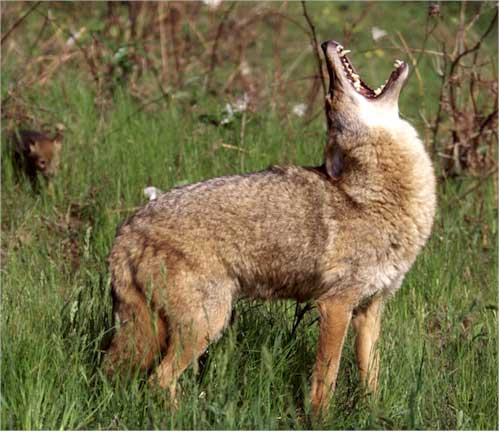RiskVA
What Good Are Predators? 1 Nov 2017
Nature’s fields and forests are literally crawling with predatory animals and they serve a very useful purpose. Unfortunately, most people don’t know about natural predation. As a National Park Ranger at Grand Canyon National Park, I was often asked why we allowed predators in the park. The answer is both simple and complex. The easy part is that predators keep their food animal populations in check. They help maintain the “balance of nature.” However, natural populations of plants and animals are always changing and a truly static balance is really never obtained. Park visitors, especially on the North Rim of the canyon, enjoyed viewing numerous herds of “Bambis” (mule deer) grazing the many open grassy meadows there. And they wanted to see more.
During the early 1900s, government trappers in the North Kaibab forests of Arizona decided to remove as many predators as possible to reduce pressure on the deer. From 1906 to 1923, approximately 780-1000 mountain lions, 30 gray wolves, 4900 coyotes, and over 350 bobcats were destroyed. At the same time 200,000 sheep and 20,000 cattle were also removed. The combined effect of predator removal and almost complete cessation of domestic livestock grazing was devastating.
Over the next 20 years, the estimated herd of 4000 mule deer soared to over 100,000. Finally, the deer began to starve and the population crashed. After one particularly hard winter, deer carcasses littered the spring meadows. Thousands of deer died from starvation.
In 1859, rabbits were imported to Australia for sport hunting. But, there were no predators to keep their populations under control. Very quickly, the area was practically crawling with millions of them. They became major crop pests. Although they were shot and poisoned in huge numbers, control was not possible.
In an effort to control the rabbits, myxomatosis, a fatal rabbit disease, was introduced and millions of rabbits died. It looked like this microscopic predator would win the day. However, the rabbits soon developed resistance to the disease and by 1995 their population had rebounded to an estimated 300 million.
Then in 1995 a deadly virus called rabbit calicivirus was being tested on an island off the coast of Australia as a possible solution. But before tests were complete, it escaped from the island, probably carried by insects, and went inland. 80 to 85 percent of the rabbits died and so far, the effect seems to be holding. But there is worry that the remaining rabbits will develop resistance to this virus as well, and another population explosion will take place. Tinkering with Mother Nature can be a risky business.
In most forests there are many predators helping to keep nature in balance. Although we don’t have wolves, and very few cougars here in East Texas, there are plenty of bobcats, coyotes, foxes, racoons, snakes, hawks, owls, and a long list of other predatory animals. They serve the important purpose of assisting in keeping animal populations within the carrying capacity of the land.
So, predators serve an important and worthwhile role in keeping nature in balance. Spiders control insects. Snakes, coyotes, bobcats, and predatory birds eat rats, mice, and other vermin. The thing to remember is that “predator” isn’t always a bad word.
Kill every coyote on sight, panic at the thought of seeing a cougar, and pretty soon we develop a mindset that every predator ought to be exterminated. Not a good idea. Just pray that cattle and other animals we prey on don’t suddenly catch on to what we’re doing to them and get organized. There’s nothing worse than a mad cow in the fields and forests!
Dr. Risk is a professor emeritus in the College of Forestry and Agriculture at Stephen F. Austin State University in Nacogdoches, Texas. Content © Paul H. Risk, Ph.D. All rights reserved, except where otherwise noted. Click paulrisk2@gmail.com to send questions, comments, or request permission for use.

